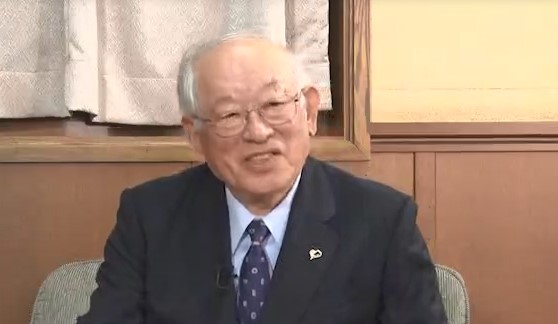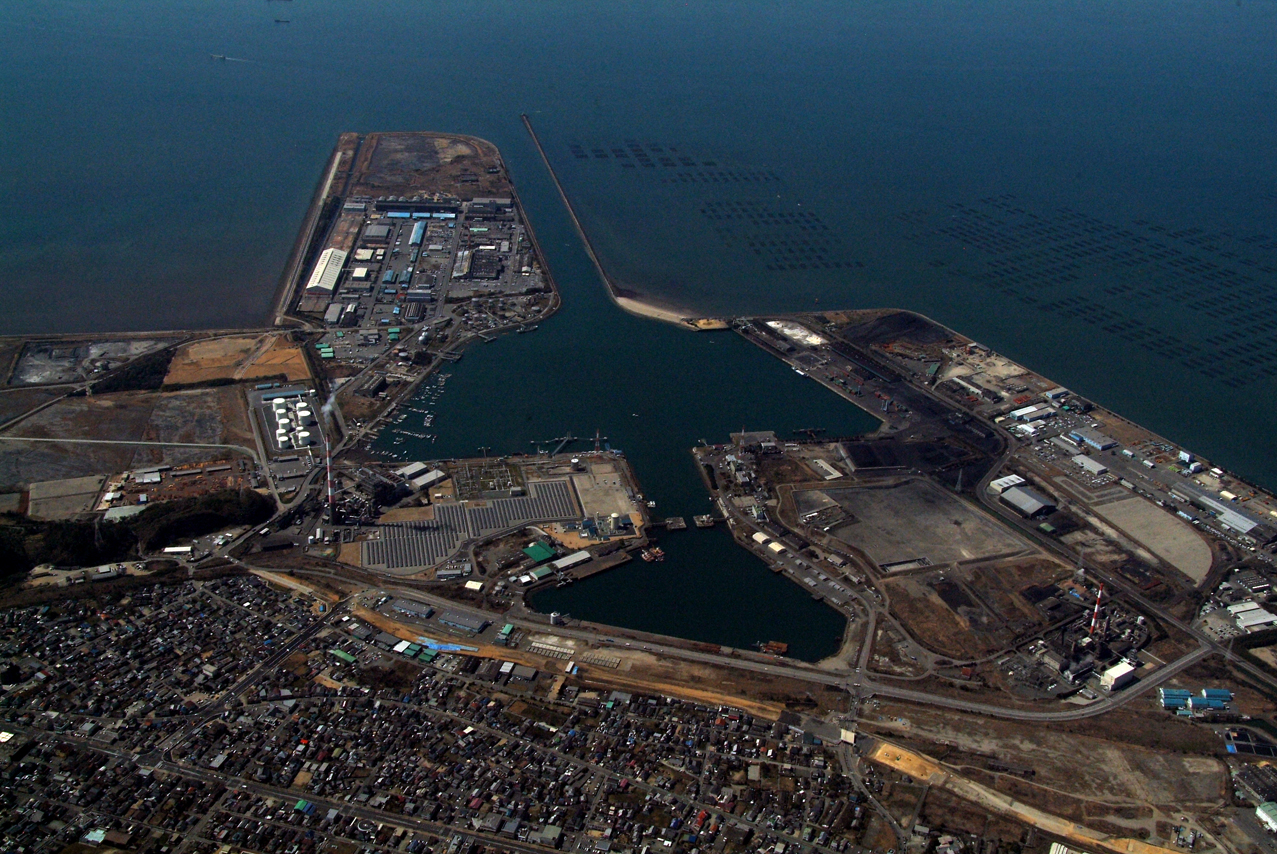PEOPLE
What is the secret plan to make the Port of Miike, an operational asset of a World Heritage site?

Former Mayor of Omuta City
Born 25 November 1943 (79 years old).
1966 Graduated from the School of Political Science and Economics, Waseda University.
1966 Joined Mitsui Kinzoku Mining Co.
1989 General Manager and Research Officer, Miike Office, Mitsui Kinzoku Mining Co.
1991-2003 Member of Omuta City Council (three terms)
2003-2007 Mayor of Omuta (3 terms)
January 2008- Presides over the "Ariake Isei Juku" (political academy)
Chairman of the Omuta Police Station Council
Past Chairman of the Omuta Central Lions Club
Author of 'From Fiscal Reconstruction to a City of Civic Collaboration' (2016, Kaitosha), 'Basic Knowledge of Political Science and Public Administration' (2022, private edition), 'Local Government & Elections, Lectures' (2022, private edition), etc.
Kato: I am really happy to see you after a long time. I think the first time I met Mr. Koga was when you were a city councillor, but today I would like to ask you to tell us a little bit about what has happened since then.
Koga: I am pleased to see that you are as active as ever. When I was a city councillor in 1997, the Miike Coal Mine was closed.I was Chairman of the Special Committee on Measures to Deal with the Closure of the Mine, so I have a history of working with the support of the national and prefectural governments to deal with the closure and how to develop the town after the mine closure. I developed a personal attachment to the coal industry and other related companies that have created this town. Since then I have been saying that the Port of Miike and other related facilities ought to be preserved. I have also felt that the Port of Miike and other related facilities should be preserved and utilised in the town’s development after the mine’s closure. In 1999, I wrote a series of 10 articles on the theme of town development and the industrial heritage of modernisation in the local newspaper, the Daily Omuta, and also made a proposal at a plenary session of the parliament, which received some support.
In 2003, when I took office as Mayor, I also held more than 10 ‘Talking with the Mayor' meetings for citizens to discuss town development and gave classes at five to six primary and junior high schools every year, where I explained that Omuta's Miike coal mine played a significant role in forming the town and that knowing Omuta's history would be helpful for future town building. We did not think it would become a World Heritage Site at the time, but we have been trying to build momentum. It was also the luck of the hour that I was able to meet Ms. Kato at such a juncture. Under Ms. Kato's leadership, we have worked with experts, politicians, bureaucrats and many supportive activists to realise the World Heritage Site. For me, it is a blessing that I never thought I would have.
Kato: When I first met you, it was shortly after I had published my book entitled “Industrial Heritage.” I remember you were wearing a festival happi coat at that time.
Koga: The “Daijayama Summer Festival” that takes place in July, right? At that time, we met at the chamber of commerce and industry, and you said, "Let's preserve our industrial heritage!" But it was still too early to predict the result.
Kato: Yes, and then the movement switched to making Miike a World Heritage Site, but at the very first meeting of the Kyushu Governors' Association, the first time you heard "Let's make it a World Heritage Site!” what did you think of it?
Koga: At the time, I thought the modern industrial heritage had to be preserved for future generations, so of course I was all for it. But to be honest, I did not believe that it would actually become a World Heritage Site.
Kato: There were pros and cons. After that, it took time until we went from the framework of the Kyushu Governors' Association to the framework of the Council, which is a group of eight prefectures and 11 cities. In the process, out of the many component parts, it was decided, "Let's choose Miike!" And then, Michael Pearson went to Omuta for an inspection tour, and things started to heat up and get serious. Around that time, there was talk about how wonderful the Port of Miike was, but just then, the Port of Miike was removed from the list of major ports. At that time, we held a symposium and talked about making the Port of Miike a World Heritage Site within the framework of simply a port, and the audience was in a 'why!'-type of mood.
Koga: The Cultural Hall was packed. On 3 August 2010, you gave a lecture entitled 'Seminar for the Promotion of World Heritage Listing', and we also had a panel discussion. That was the first time I felt Ms. Kato's enthusiasm. I also participated in the discussion as one of the panellists and remembered that many questions were flying about in that hall at that time.
Kato: At the time, the Agency for Cultural Affairs only wanted to do the lock gates and the docks, but I thought that the importance of the Port of Miike was the shape of the Hummingbird itself and that it would be meaningless without doing the whole Port of Miike. When I said that in order to do that, it would have to be done within the framework of the port, not the cultural property, everyone was surprised. Usually, the Agency for Cultural Affairs designates a place as a historic site or an important cultural property and then recommends and registers it.
In such a situation, my opinion received much flak from people. There was also much criticism of the idea of registering the entire eight prefectures and eleven cities. There was also a particular sentiment about whether the government would be okay with spending money on such a proposal. The reaction of many people to this was that they wondered whether they could support such an unprecedented idea; my idea was to create a new framework so that operational assets could be registered as World Heritage sites within a framework other than the Agency for Cultural Affairs through regulatory reform, even though the Agency has jurisdiction over these sites. In such a situation, we fought for the Port of Miike during the regulatory reform, so the Port of Miike is actually the first place that had regulatory reform. It was great that the mayor of Omuta agreed with my idea.

Director, National Council of Industrial Heritage
President, Duke Estate Co.Ltd.
Representative Director, National Congress of Industrial Heritage
(Honorary Advisor, Kyushu Railway Company (JR Kyushu)
Senior Researcher, Industrial Heritage Information Centre
Honorary Advisor, Nippon Mining Co., Ltd.
The Ambassador of Supporting Kamaishi Hometown
Former Director of Nagasaki City World Heritage Office
Former General Manager, Nagasaki Shipyard and Machinery Works, Mitsubishi Heavy Industries, Ltd.
Chairman, Fujisankei Group
Executive Managing Advisor, Fuji Television Network, Inc.
Executive Managing Advisor, Fuji Media Holdings, Inc.
Advisor, Federation of Japan Port and Airport Construction Association
(Ex. Chairman of Specialists Center of Port and Airport Engineering)
Mayor of Nagasaki City
Former Director of the Sano Tsunetami Memorial Museum (currently known as Sano Tsunetami and the Mietsu Naval Dock History Museum)
Director of NPO Association for Thinking about Satoyama
Director of National Congress of the Industrial Heritage
Honorary Chief Priest Toshinari Ueda
Former Mayor of Omuta City
Archaeologist and Heritage Conservation Specialist
A fellow of the Japan Federation of Engineering Societies
Team Member of the Industrial Project Team Office for the Promotion of World Heritage Listing under Cabinet Secretariat
Governor of Kagoshima Prefecture
Mayor of Hagi City
Mayor of Uki City, Kumamoto Prefecture
The Former Employee of Nippon Steel Corporation
An Associate Professor of the Faculty of Science and Engineering in Iwate University
Chairman of the Tourist Guide Association of Misumi West Port
President of Kuraya Narusawa Co., Ltd.
Chairman of Izunokuni City Tourism Association
Director and General Manager of Gunkanjima Concierge
Producer of the Gunkanjima Digital Museum
Owner at Tōge Chaya
Chairman: Mr. Hidenori Date
President: Mr. Masahiro Date
Proprietor, Houraikan Inn
Representative Director of Egawa Bunko non-profit incorporated foundation
The 42nd head of the Egawa Family
Democratic Party for the People (DPP) Representative for Nagasaki Prefecture
President of the NPO, Way to World Heritage Gunkanjima
Representative Director
MI Consulting Group
President of Watanabe Production Group and Honorary Chair of Watanabe Productions Co., Ltd.
Member of the House of Councillors
Governor
Kagoshima Prefecture
World Heritage Consultant
Director and Dean, The Kyushu-Asia Institute of Leadership
Representative Director, SUMIDA, Inc.
Journalist, founder of the Shimomura Mitsuko Ikikata Juku School
Representative, Rally Nippon
Chairman, Sites of Japan’s Meiji Industrial Revolution World Heritage Route Promotion Council Director, National Congress of Industrial Heritage
Representative Director, General Incorporated Foundation National Congress of Industrial Heritage (Advisor, Public Interest Incorporated Foundation Capital Markets Research Institute)
Mayor of Nagasaki City
Policy Director at Heritage Montreal
World Heritage Consultant
Executive Director of Kogakuin University
Heritage Architect and International Consultant
Head of Data Acquisition at The Glasgow School of Art’s School of Simulation and Visualisation
Head of Industrial Heritage, Historic Environment Scotland, Edinburgh
Scottish Ten Project Manager, Historic Environment Scotland, Edinburgh
Mayor of Izunokuni City, Shizuoka Prefecture
Pro-Provost and Chairman of Council of the Royal College of Art. Heritage advisor of Canal & River Trust for England and Wales.
Dean of Tokyo Rissho Junior College
Professor emeritus of Keio University
Mayor of Kitakyushu City
At the 39th session of the World Heritage Committee convened in Bonn, Germany, from June 28 to July 8, 2015, the decision was approved to inscribe the Sites of Japan’s Meiji Industrial Revolution on the World Heritage list.
At a celebratory party held to mark the occasion, some of the primary promoters of the project spoke of their joy in achieving their goal and of the trials and tribulations to getting there.
Director and Managing Executive Officer, Hanshin Expressway Company Limited
Member, Board of Directors, National Congress of Industrial Heritage
Vice-Governor of Shizuoka Prefecture
Mayor of Hagi City
Chairman, Tokyo Metro Co., Ltd.
Mayor of Omuta City
Deputy Director-General, Lifelong Learning Policy Bureau, MEXT
Former Counsellor, Cabinet Secretariat
Mayor of Kamaishi City
Member, Board of Directors, National Congress of Industrial Heritage Counselor, Shimadzu Limited
Chairman of the Consortium for the World Heritage Inscription of Modern Industrial Heritage (Kyushu-Yamaguchi) and governor of Kagoshima Prefecture (as of 2015)